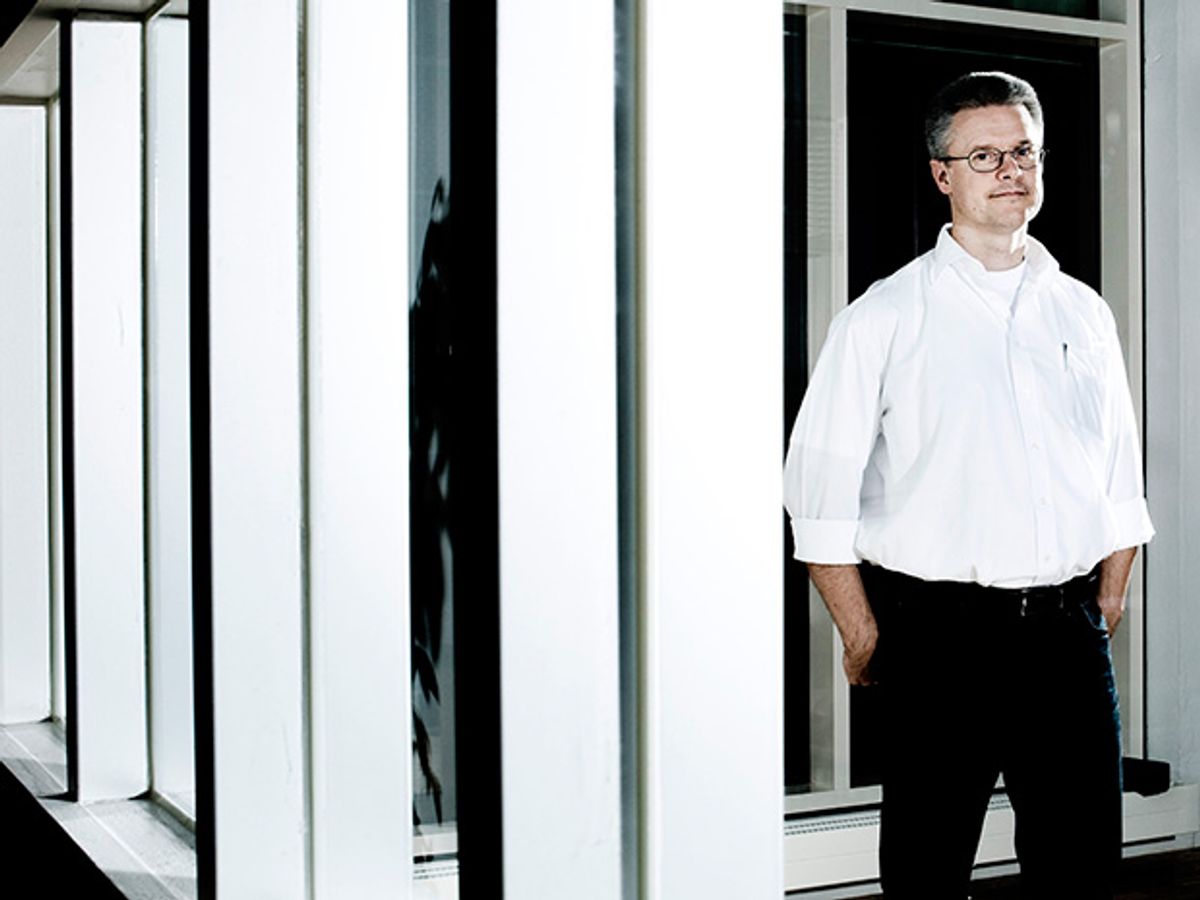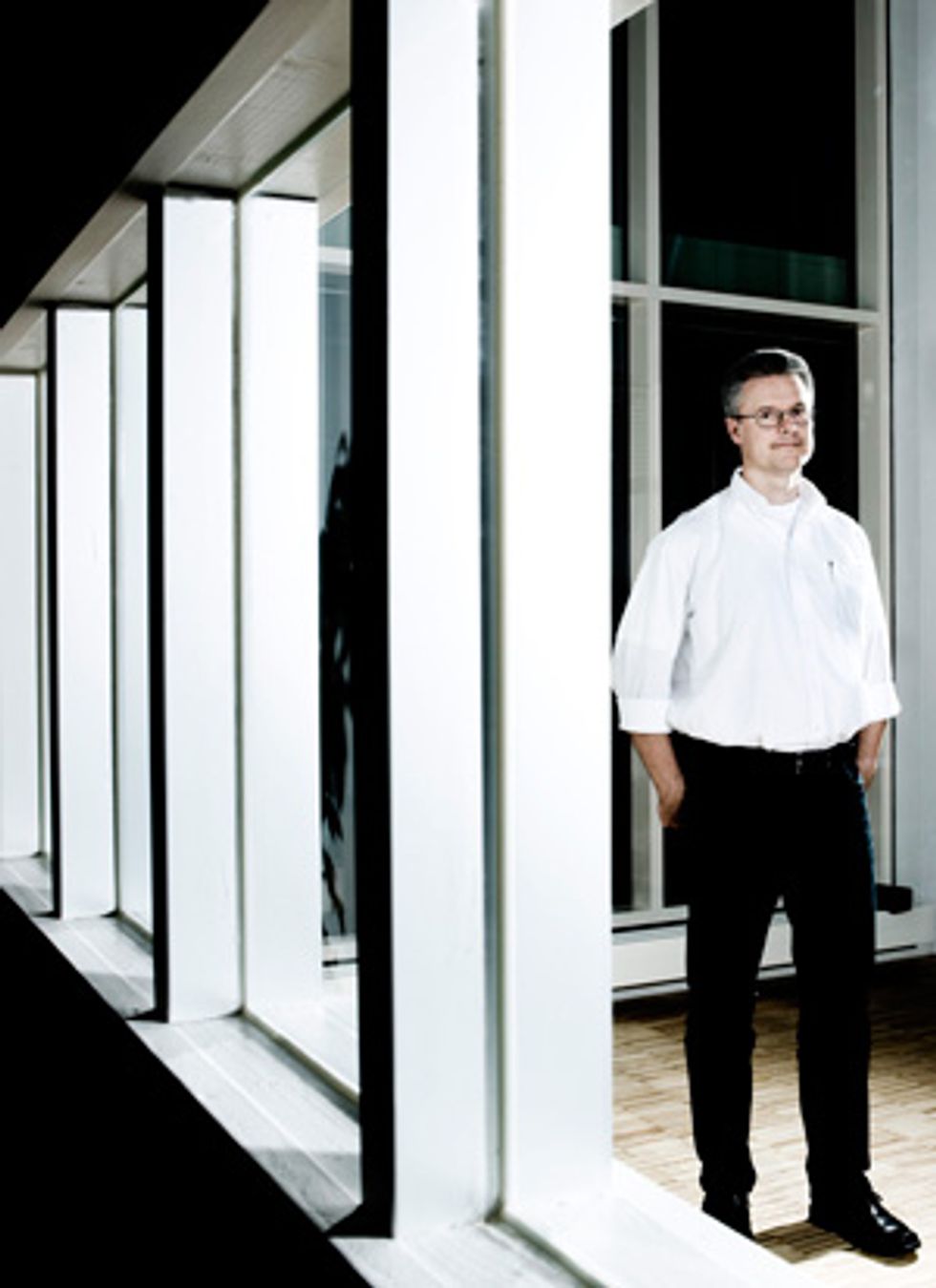Dream Jobs 2010: Henrik Sørensen, Green-Building Guru
Henrik Sørensen works with architects to design sustainable buildings

This profile is part of IEEE Spectrum’s Special Report on Dream Jobs 2010.

Henrik Sørensen was 25 years old when a career counselor asked him to describe his dream job to a room full of unemployed engineers. “To work in solar energy on the southern part of Fyn,” Sørensen replied, referring to the Danish island where his father was born.
His response was held up as an example of how not to think about jobs—he was far too specific and inflexible. Sørensen was offended, but he didn’t change his answer.
Nineteen years later, on a crisp August afternoon, he sits sipping cappuccino at an outdoor café overlooking a canal in Århus, Denmark, not terribly far from Fyn. Since the rocky beginning of his career as an energy consultant to architects, he’s completed about 200 solar-design projects. He credits his devotion to his original dream for keeping him from straying down a less satisfying path.
It was a paralyzing state for an engineer who’d known he wanted to pursue a career in solar energy since the seventh grade, when he asked for a book on renewable energy for his birthday. “It was hard to read,” he recalls, “but I learned we could melt metal with the rays of the sun—wow!” He grew up with vivid memories of Denmark’s empty, carless roads on Sundays, when gasoline was rationed during the oil crisis of 1973. The idea of harnessing the seemingly boundless potential of solar energy to end such threats of scarcity had a profound effect on him.
At the Technical University of Denmark, in Copenhagen, he studied energy engineering and worked at Risø DTU, Denmark’s national laboratory for sustainable energy, where he analyzed the role of Norwegian hydroelectricity in the Danish grid. Even seemingly unrelated pursuits fed his curiosity about renewable energy. With a 30-day loan and a purchase of 20 kilograms of coffee beans, he and another student opened a café on campus, in a building where introductory lectures were held. It was the perfect place for snagging sleepy customers. Selling their coffee for one krone per cup (about US $0.20), they made approximately $13 000 and spent the surplus on student bus tours to power plants and wind turbines. Then he graduated in 1992, discovered that there were no solar-related jobs, and saw his busy lifestyle come to a sudden halt.
After he’d been unemployed for four months, his wife pushed him to find a hobby. Sørensen left home to attend a sports school in Oure, on the southern end of Fyn. He bought a boat and took up sailing. He relaxed. “I learned, hey, I can spend a whole day doing other things than being an engineer, crunching numbers, or reading funny stuff about solar collectors, and still feel I spent my time in a good way,” he says. The plan was to stay six months, but two weeks later he got his first job offer.
He started working for Esbensen Consulting Engineers, which helps architecture firms plan the engineering behind sustainable buildings, and he’s been there ever since. His first assignment turned out to be one of the most important in his career. It was to design a building called the Brundtland Centre, in Toftlund, Denmark, so that it would use half as much energy as similar commercial buildings.
To meet the challenge, Sørensen helped his clients select the building’s form, orientation, and materials to push daylight as far into a room as possible. For the windows, he and his partners chose reflective blinds that automatically tilt to let daylight in and reduce glare. They programmed the artificial lighting to adjust itself in response to varying levels of natural light. Movement sensors activate ventilation fans only when occupants appear. Photovoltaic panels laminated onto double-paned glass on an atrium roof generate electricity; heat from solar collectors built into the facade warms fresh air in the atrium before fans circulate it.
Because this was one of Denmark’s first comprehensive sustainable design projects, there were few clear answers on how to go about it. For example, Sørensen’s collaborators had initially assumed they would include a panel of knobs and switches to control the blinds, lighting, and air circulation. Sørensen was strongly opposed. “Nobody—well, except maybe engineers—wants to live in a building where you need to be a pilot to operate and control things,” he says. He talked them down to just a simple +/− button that adjusts the amount of light in a room.
Those fruitful collaborations make the stress of juggling multiple projects and spending late nights at the office worthwhile for Sørensen. When he does work late, the perfect scenario involves meeting up with architects in the evening, after the phones have died down and everyone else has gone home. They surround themselves with tables piled high with sketch paper. “We listen to crazy music and do crazy things, and that’s how I try to push our ideas forward,” he says. Once they gathered on the roof of an architecture firm, the lights of Denmark’s tidy streets twinkling below them, to peer over the edge and see what might happen if they were extremely literal about looking for the “big picture.” On another occasion, Sørensen prodded an unfamiliar group of designers to stand up and “dance their lunch.” They shuffled around awkwardly before he let them sit down and get back to their sandwiches, hoping they got the point about unconventional thinking.
Now, seated at that café table by the water, he’s thinking about his latest preoccupation. Students zip by on bicycles, and parents push strollers across the stone-paved streets. He looks past them toward a set of tall, narrow glass windows running up the side of a century-old, mustard-colored building. Next to it stands a building with a weathered facade and distinctive brown trim. Both buildings are lovely, and also unlike anything else as far as the eye can see. It’s that architectural uniqueness that makes energy-efficiency retrofits so challenging.
So he’s devising a system that he calls the Lego blocks of sustainable design—a set of rules that would turn nearly any building, regardless of age, size, or structure, into an energy-efficient and comfortable dwelling. Architects, for example, would be directed toward materials that work well together, letting designers expend less effort in creating a house that consumes little energy and more time dreaming up an enjoyable dwelling.
Guided by the pleasing simplicity of those Danish plastic building blocks, Sørensen is making his mark, one building at a time.
This article originally appeared in print as “Green-Building Guru.”
To Probe Further
For more articles and special features, go to Dream Jobs 2010.
